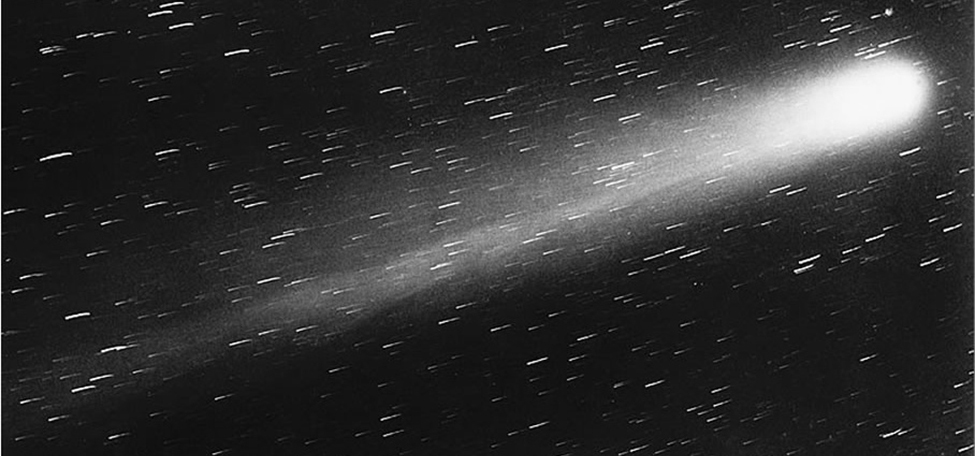Halley’s Comet

We now return to the Why It Matters for this module, which discusses the motion of Halley’s comet around the Sun. Kepler’s first law states that Halley’s comet follows an elliptical path around the Sun, with the Sun as one focus of the ellipse. The period of Halley’s comet is approximately [latex]T=76.1[/latex] years, depending on how closely it passes by Jupiter and Saturn as it passes through the outer solar system. Let’s use [latex]T=76.1[/latex] years. What is the average distance of Halley’s comet from the Sun?
Using the equation [latex]T^{2}=D^{3}[/latex] with [latex]T=76.1[/latex], we obtain [latex]D^{3}=5791.21[/latex], so [latex]D\approx 17.96[/latex] A.U. This comes out to approximately [latex]1.67 \times 10^{9}[/latex] mi. A natural question to ask is: What are the maximum (aphelion) and minimum (perihelion) distances from Halley’s Comet to the Sun? The eccentricity of the orbit of Halley’s Comet is [latex]0.967[/latex] (Source: http://nssdc.gsfc.nasa.gov/planetary/factsheet/cometfact.html). Recall that the formula for the eccentricity of an ellipse is [latex]e=\frac{c}{a}[/latex], where [latex]a[/latex] is the length of the semimajor axis and [latex]c[/latex] is the distance from the center to either focus. Therefore, [latex]0.9067=\frac{c}{17.96}[/latex] and [latex]c\approx 17.37[/latex] A.U. Subtracting this from [latex]a[/latex] gives the perihelion distance [latex]p=a-c=17.96-17.37=0.59[/latex] A.U.
According to the National Space Science Data Center [1] the perihelion distance for Halley’s comet is [latex]0.587[/latex] A.U. To calculate the aphelion distance, we add [latex]P=a+c=17.96+17.37=35.33[/latex] A.U. This is approximately [latex]3.3\times 109[/latex] mi.
The average distance from Pluto to the Sun is [latex]39.5[/latex] A.U. [2], so it would appear that Halley’s Comet stays just within the orbit of Pluto.
Candela Citations
- Calculus Volume 3. Authored by: Gilbert Strang, Edwin (Jed) Herman. Provided by: OpenStax. Located at: https://openstax.org/books/calculus-volume-3/pages/1-introduction. License: CC BY-NC-SA: Attribution-NonCommercial-ShareAlike. License Terms: Access for free at https://openstax.org/books/calculus-volume-3/pages/1-introduction
